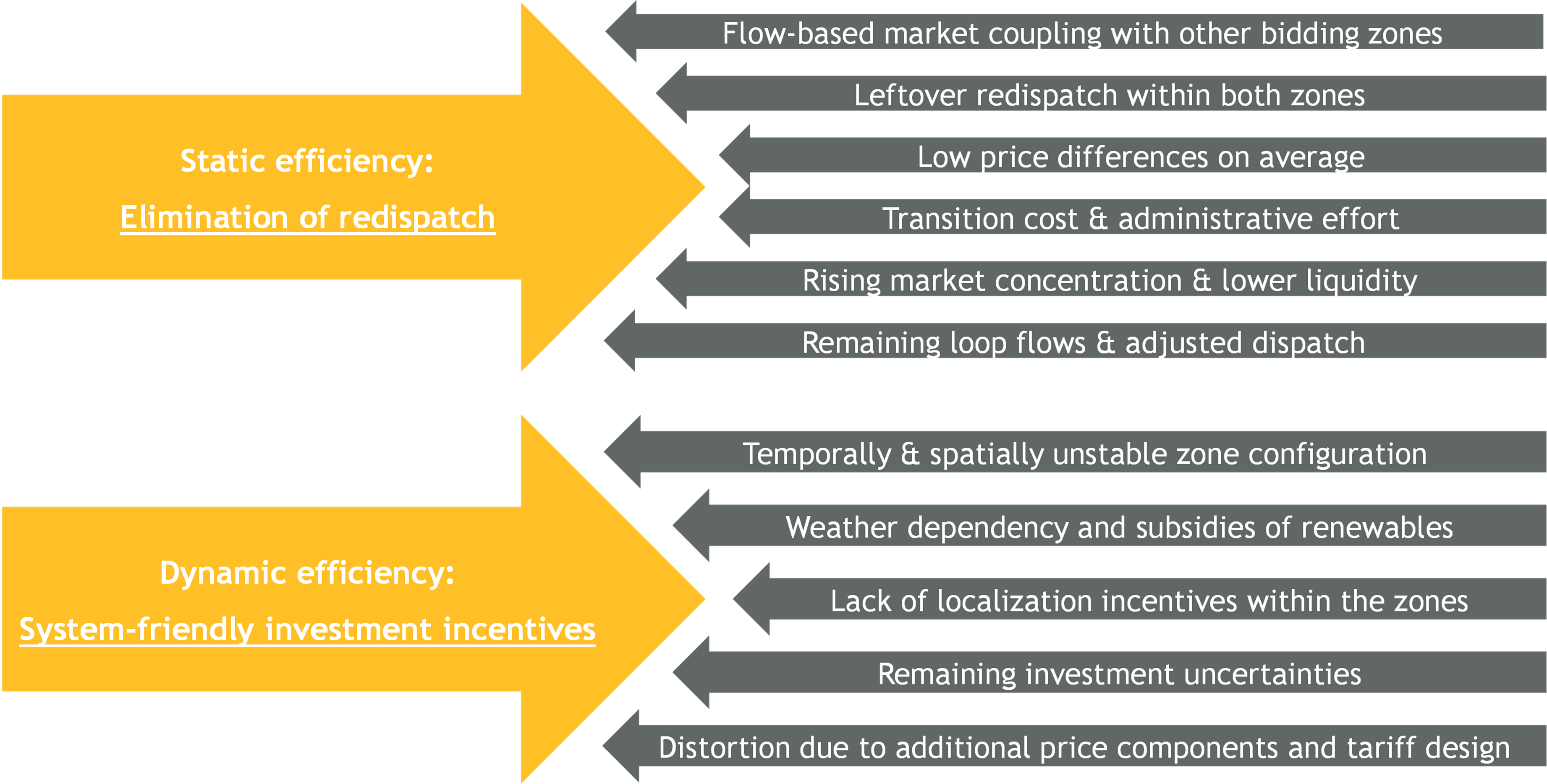
According to current research, splitting the German-Luxembourg electricity bidding zone could lower welfare in the electricity market. While a bidding zone split could theoretically reduce the need for redispatch and incentivize grid-adequate investments, practical frictions may limit the effectiveness of such a split.
In its new policy brief, “Der deutsche Gebotszonensplit: Worum geht es?”, a team from the Institute of Energy Economics (EWI) at the University of Cologne outlines the potential advantages and drawbacks of dividing the German-Luxembourg bidding zone into a northeastern and a southwestern zone. The brief evaluates these effects on welfare using a literature review of the current research landscape.
German grid bottlenecks arise primarily from the transmission of inexpensive wind power from northeastern Germany to more industrialized regions in the southwest (Figure 1). These bottlenecks result in welfare losses, as market outcomes must be adjusted through redispatch measures. Furthermore, these bottlenecks negatively impact welfare in neighboring electricity systems. One approach to reducing redispatch measures and costs is to internalize grid bottlenecks in market outcomes. By accounting for regional generation, grid, and consumption structures, the efficiency of electricity markets and grid operations could potentially be enhanced.

Various bidding zone reconfigurations are currently simulated and analyzed by the European regulatory authority ACER as part of the Bidding Zone Review process. A frequently discussed option for the German-Luxembourg zone involves a split into a northeastern and a southwestern zone.
In theory, the power plant dispatch in both bidding zone configurations would be the same. While grid operators need to adjust market outcomes through redispatching in the current configuration, grid constraints would be more accurately accounted for in divided zones. On average, wholesale electricity prices in the southwestern zone would be expected to be higher than in the northeast, leading to distributional effects between producers and consumers in both zones. Over the long term, these price differences could incentivize system-supportive, welfare-enhancing localization of generation, consumption, and flexibilities.
In practice, however, constraints could distort these effects and reduce welfare gains. Figure 2 illustrates the theoretical welfare gains from both static and dynamic considerations (yellow arrows) compared to the practical limitations of a zone split.

In the short term, a bidding zone split would likely only partially reduce current redispatch volumes, as redispatch within zones is not resolved by the split. Additionally, reduced market liquidity or increased market power could reduce market welfare. Further, it is unclear whether the likely small price differences between the zones would suffice to create long-term investment incentives for producers, consumers, and flexibilities. Beyond various location factors, this is also due to static tariff structures and the distortion of end-user prices by taxes and grid charges. Moreover, these price differences would not incentivize spatial investments within the zones, potentially creating new bottlenecks. Over time, planned grid expansions could alleviate the bottleneck between the two zones, undermining the stability of the zone configuration, as this structural bottleneck forms the basis for the split. However, this stability could be crucial for regional investment decisions.
In summary, while a zone split offers theoretical advantages in both the short and long term, fully realizing these benefits in practice appears unlikely. By contrast, the efficiency of electricity generation and distribution in the uniform zone could be enhanced through various alternative measures that establish spatial investment and dispatch incentives. A final assessment of the bidding zone split, therefore, also requires further exploration of alternative regulatory regionalization measures and their impact on the static and dynamic efficiency of uniform and split bidding zones.